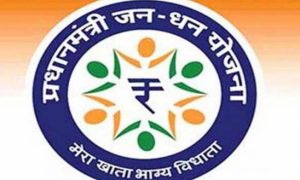The Canadian federal government has begun consultations with provinces on making some significant changes to the Post-Graduate Work Permit (PGWP) program, which could impact a large number of Indian students in Canada.
Essentially, these changes aim to restrict the benefit of PGWP — currently available to all international students in Canada — to only those graduates who are likely to be absorbed in sectors facing a shortage of workers.
Also Read : NEET Grace Marks To 1,563 Students Scrapped, Re-Exam On June 23: Centre
What exactly has happened?
The Canadian government has reportedly written to provincial governments about the need to “align PGWP eligibility with labour market needs while reducing the overall volume of PGWP holders”. An Immigration, Refugees and Citizenship Canada (IRCC) briefing paper says “work is…underway to re-align the [PGWP] program to better meet targeted labour market needs and immigration objectives”.
According to the paper, which was last modified on May 24, “The goal of re-aligning labour market needs is to facilitate access to work permits for students entering occupations in shortage, while reducing access for graduates from other programs. This could have a significant impact on the volume of international students and PGWP holders, if stringent tapering is applied to programs with lower labour market relevance.”
The paper says “advice on this issue will be provided to the [Immigration] Minister in spring 2024, with the goal of implementing changes in January 2025”.
The paper says “advice on this issue will be provided to the [Immigration] Minister in spring 2024, with the goal of implementing changes in January 2025”.
The duration of the PGWP is determined by the length of the student’s study program in Canada, and ranges from eight months to three years. However, if a student’s passport expires before the validity of the PGWP, the permit remains eligible only until the passport’s expiry date.
PGWP is the first step to get Permanent Residency (PR) in Canada after completing studies, which is the main aim of students from Punjab. According to the Canadian government briefing paper, 40% of study permit holders in Canada in 2023 were from India, followed by 10% from China and 5% from the Philippines.
Also Read : No Insurance Claim To Be Rejected For Lack Of Documents: IRDAI
“The PGWP increased by 214% in 2023 compared to 2018,” the paper says.
So how could the program potentially change now?
Questions that the Canadian government has reportedly asked the provinces give an indication of the changes that are under consideration.
The provinces have been asked to identify the occupations that would be eligible for PGWP if it were to be based solely on occupations in shortage, and whether they think any occupation was missing from the mapping document, and why. Also, should any groups, such as francophone students or those in graduate programs, be exempt from these changes?
The letter reportedly asks whether international students need to show a job offer aligned with the shortage list to extend their PGWP beyond one year, and whether other criteria, such as language or provincial support, should be considered for such extension of the permit?
The provinces have also been asked whether labour market-based changes to PGWP eligibility should be enforced for all graduates starting this year, or only for new students. Do the proposed changes to the PGWP align with the type of workers provinces want to keep in their area in the long run?
How can these changes, if implemented, impact those who have already completed their studies or in the process of doing so in Canada?
Experts in Punjab said a large number of students are pursuing irrelevant courses in Canada only to get a study visa, which would then allow them to pursue their dream of settling down permanently in that country. There isn’t much demand for graduates of these courses in the Canadian labour market, which, however, has vacancies in various other fields.
Changes in the PGWP seeking to “align” the issuing of permits to labour market requirements will hit these students’ plans.
Is this the first time that Canada is putting the squeeze on international students?
No. In January, Canada capped their number, and made Provincial Attestation Letters (PAL) mandatory for applying for a study visa. It also doubled the Guaranteed Investment Certificate (GIC) to $20,635. The GIC is necessary for obtaining a student visa, as it shows that an applicant can sustain themselves for a year in Canada.
All these steps were taken to discourage non-serious applicants for study permits, and to “maintain a sustainable level of temporary residence” in Canada.
Also Read : Government Announces Free e-KYC For Ration Card Verification, Deadline Approaching
What should prospective student visa applicants do to improve the chances of both obtaining a visa and PGWP in the potential new regime?
According to experts, applicants would be well-advised to choose skill-based, specialised programs that are aligned with the job demand in Canada’s labour market, rather than general courses with very little demand. By opting for courses with high demand, they can secure their chances of obtaining both the visa and PGWP, they said.
Sumit Jain, a consultant based in Jalandhar, said students of business management should think of specialising in areas like accountancy, while those studying hospitality could focus on culinary arts. Courses in the sciences, banking, nursing, engineering, IT, biosciences, marketing and management, human resources, artificial intelligence, business intelligence, cloud architecture, security analysis, and pharmacy are among those with significant scope in the job market.
A degree in these areas could earn graduates annual salaries ranging from Canadian dollars 70,000 to 1.37 lakh, the experts said.
“Stay updated on thriving industries, and pursue formal education and training in desired fields to maximize chances of obtaining PGWP and eventual Permanent Residency (PR) in Canada,” expert Gurpreet Singh of I-Can consultancy, said.
“It is crucial to align course selection with job demand, and to stay informed about potential changes to immigration policies,” he said. Singh pointed out that Canada highlights job availability across various fields on official government websites.
Sunil Kumar Vashisth, associate director of Pyramid e-Services in Jalandhar, emphasized that while the student visa success rate is still very high, new applicants must choose their courses carefully.





































